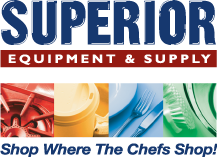
Anyone who knows anything about operating a business will agree that time is money. And in a fast-paced, quickly expanding food industry, time means everything.
But that doesn’t mean operators can afford to neglect the quality of their food and its safety. Everyone knows that checklists are of great importance when it comes to food safety and that they’re used across the board—from restaurants and hospitals to senior living facilities and university dining areas. It doesn’t matter what type of food service establishment someone owns, manages or works in—checklists are a means to ensuring compliance with food-handling procedures and regulations.
But the traditional paper-based method of filling out checklists is no longer enough. It has proven increasingly inadequate in meeting the operational demands of the modern food-service facility, especially since the passing of the Food Safety Modernization Act (FSMA) in 2011.
This law substantially enlarged the amount of regulatory paperwork that must be managed at foodservice sites. For some, manually filling out checklist forms has become an excessively burdensome, time-consuming activity.
So how can operators cope with inefficient (and oftentimes nerve-wracking) checklist processes? Digital checklists are about to become your new best friend.
How digital checklists can improve food service operations
With digital checklists, employees can simply use a tablet or other web-connected device to record important data. Taking it up a notch, a brand like ComplianceMate offers a mobile app that guides staff from step one to step “done.”
Improved organizational tools–Wouldn’t it be nice to keep all checklists in one place and ensure that they stayed in one place? Digitizing checklists does just that. A digital checklist system can also provide easy access to necessary forms, so that operators don’t have to search through piles and piles of paper. It doesn’t matter how many different types of lists there are—cleaning checklists, pest control checklists, shift change checklists, heating/cooling logs, or others—the system can juggle everything so that operators no longer have to.
Convenient searchability–Sometimes it’s necessary to dig into old checklist data—for example, to analyze compliance trends that could indicate systemic problems. Being able to pull up this data from a handheld device makes the process a whole lot easier and a whole lot more accessible in order to compare data.
Selective data access–Adjustable controls means no one has access to data that isn’t necessary to their job function. This bolsters the security of the checklist system.
Site-specific customizability–This is particularly important for organizations with multiple sites. Different locations may have different maintenance demands which are reflected in differing checklist procedures. Operators can set the system to provide personnel at each site with the unique information they need.
Automatic timestamps–This digital checklist system can automatically record the precise time and date when certain events occur so that operators have a trustworthy record on hand.
Secure data storage–Digital checklist systems preserve valuable data in a secure, cloud environment, so it’s easily retrievable, but only by those who have access. Operators don’t have to worry about finding a physical safe place to store their old checklists. They’ll always be available on a mobile device.
An HACCP-compliant digital checklist system offers a number of efficiency-boosting benefits that make the team’s day-to-day operations faster and smoother—and makes operators’ day-to-day worries about paper checklists a thing of the past.

